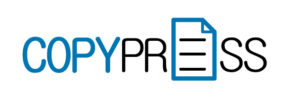 The Balance SMB states that 60 percent of failed small businesses cited cash flow as the main cause. Simply put, small businesses don’t have the means to sustain a cash deficit. Most small businesses run month-to-month using the cash coming in to cover the cash going out.
The Balance SMB states that 60 percent of failed small businesses cited cash flow as the main cause. Simply put, small businesses don’t have the means to sustain a cash deficit. Most small businesses run month-to-month using the cash coming in to cover the cash going out.
Below are three of the best cash flow strategies to increase your cash reserve:
Create an Efficient Sales Machine
Cash flow is the movement of cash in and out of a business. Positive cash flow occurs when you’re bringing in more money then you’re sending out every month. One of the best ways to ensure positive cash flow is to create an effective sales machine that continuously acquires leads, converts them to customers, and keeps them reordering.
You can create a sales machine by:
- Building a lead funnel strategy: Small businesses need a creative lead generation and conversion strategy. While acquiring leads are great, converting them to customers is the bigger priority — in fact, 69 percent of marketers say lead conversion is their top priority.
- Leveraging sales and marketing technology: Small businesses can’t always devote resources to sales. As a result, look for opportunities to streamline and automate your sales process through sales and marketing technology.
- Customizing your marketing language: If small businesses can convert more leads, they’ll bring in more cash. You can improve your conversion rate and retain clients by customizing your marketing language. Account-based Marketing (ABM) is a targeted communication strategy to convert leads, and 80 percent of organizations also say that ABM increases customer lifetime value.
Read More: Five Trends That Will Shape The Influencer Marketing Industry In 2019
Manage Your Clients Effectively
Many small businesses struggle to manage their clients effectively, resulting in cash flow issues. The main areas of client management that affect cash include increasing repeat business and collecting account receivables.
Overdue invoices, delinquent receivables, and unfavorable payment terms can be difficult for any company — especially small businesses with limited resources and working capital. Avoid slow, late-paying clients by setting clear payment terms on the outset that align with your expense schedule.
Moreover, your business should not be afraid of enforcing penalties for late payments. By holding your clients accountable for their outstanding invoices, you are setting a precedent that you’ll not accept delayed receivables. This approach will help you collect more of your earned revenue and prevent unnecessary cash flow issues.
You can also keep positive cash flow by developing a stable of repeat customers. It’s estimated that 40 percent of a store’s revenue comes from repeat business. Small businesses can use loyalty programs or marketing automation to elicit repurchases and upsells from their current client base. If you can establish a steady baseline of repeat business every month, it will provide you with more stable cash flow.
Read More: How AI Empowers Sales Teams To Thrive In The Field
Control Your COGS and OPEX
Your cost of goods sold (COGS) and operating expenses (OPEX) impact on your small business’s cash flow directly. COGS are the labor, materials, manufacturing, and overhead costs that a business incurs during production. Operating expenses are the day-to-day costs that it takes to run your business, like rent, salaries, taxes, and administrative fees.
These two categories make up most of the monthly cash liabilities for a small business. Taking a proactive approach to mitigating your COGS and OPEX can help you maintain positive cash flow. For instance, seasonal businesses typically scale staff up and down depending on production needs. This creates ebbs and flows in your operating expense which must be managed efficiently based on historical data and revenue forecasting.
As a small business owner, you can’t predict every expense – which means, you can’t plan or budget for all outgoing cash. Fortunately, small businesses can take advantage of an SBA loan to get working capital to cover those unexpected expenses.
While managing your COGS and OPEX are a priority for maintaining positive cash flow, having a back-up plan in case of an emergency is always a smart idea.
Read More: The Metric Every Publisher Should Use In 2019: Revenue At Risk
Positive Cash Flow Equals Stability
Maintaining positive cash flow is paramount to the financial stability of your small business. There is a limited timeline in which any business can operate with a cash deficit — so taking steps to maintain positive cash reserve is crucial.
If you want to focus on cash flow, you need to prioritize sales, manage your clients, and control your expenses.





















